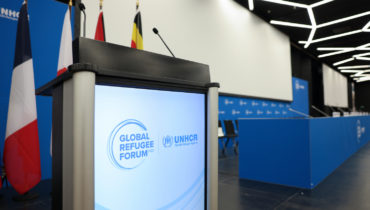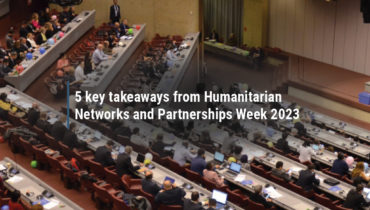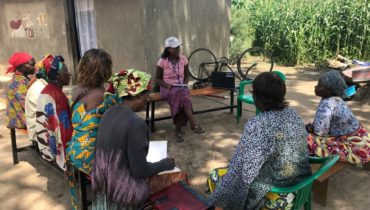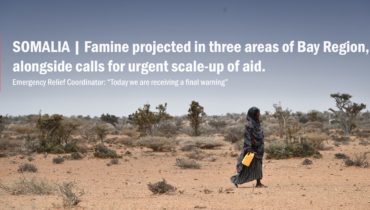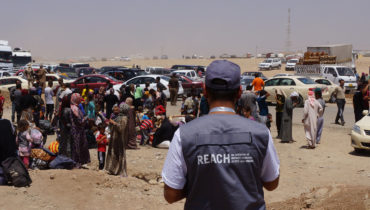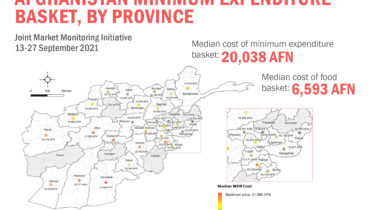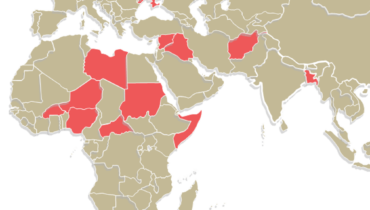Somalia: REACH Multi-Cluster Needs Assessment highlights concerning access to water and food
5 February 2018
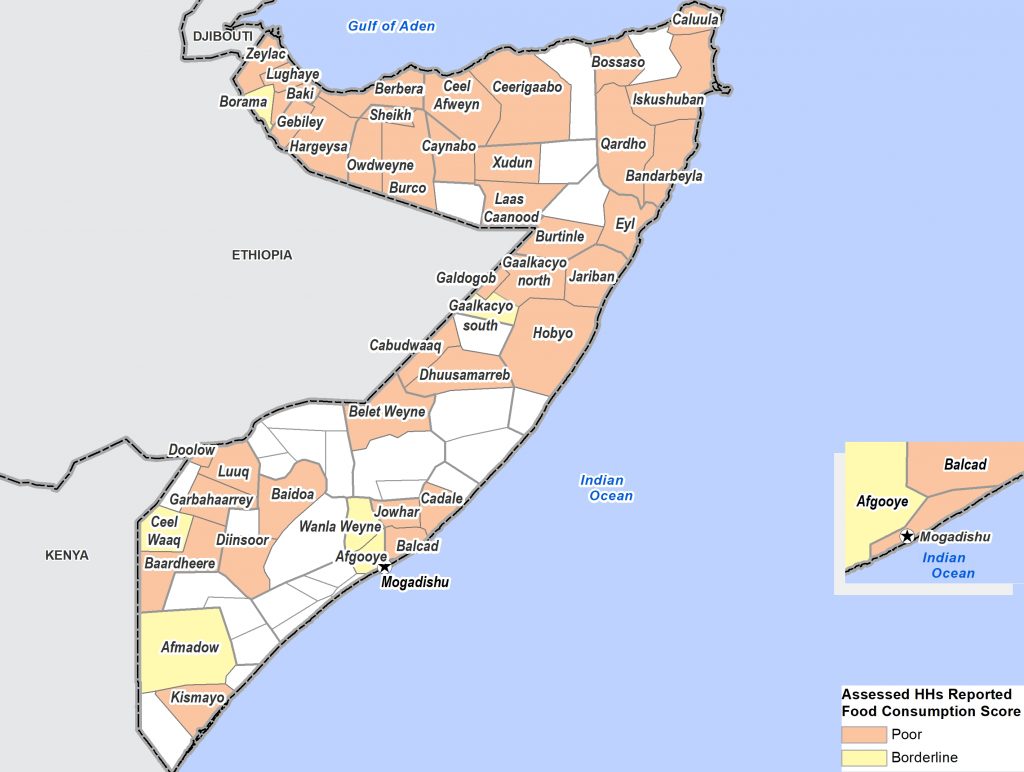
Average food consumption score in Somalia, by district ©REACH/2018
The current drought in Somalia, which began in January 2015, has resulted in a deterioration of the humanitarian situation in many parts of the country and a notable increase in household vulnerability. The impact of the drought has been further compounded by an intensification of conflict in the country especially in the latter part of 2017, resulting in exacerbated displacement trends. In this context, there is an increasing need for integrated and harmonised data and analysis to support drought and displacement responses by aid actors in Somalia.
To address these information needs, REACH conducted a nationwide independent and joint multi-cluster needs assessment (JMCNA) from July to October 2017 in close cooperation with OCHA and Clusters, which has been used as a key source of information for the 2018 Somalia Humanitarian Needs Overview and Response Plan. Targeting all population groups, the assessment covered 48 districts across 16 regions in Somalia, based on accessibility. Overall, REACH highlights alarming levels of vulnerability, with a concerning lack of access to food and water.
85% of all assessed households reported inadequate access to food, with the most commonly reported barrier to access being a lack of economic resources, and 63% of all assessed households were identified as having a poor Food Consumption Score. Regarding access to water, the reported average number of litres of water per person per day was at 11 litres, below the minimum SPHERE standards of 15 litres/day. Given that these amounts do not include water for livestock and agriculture purposes, it is likely that households are experiencing even greater water shortages. Almost half of all assessed households reported relying on an unprotected water source, raising concerns over poor water quality.
Findings also indicate that generally IDP households have higher access to basic humanitarian services, except for access to food, compared to non-displaced groups. However, IDP households that have been displaced for protracted periods appeared to be more vulnerable, compared to those recently displaced, suggesting that humanitarian response to these displaced groups has been sporadic, with a higher proportion of recently displaced IDPs being targeted.
Based on these findings, REACH highlights the urgent need for improved targeting of assistance to all IDP households to improve their access to basic services, as well as a focus on host communities, which are also living in dire conditions. As Somalia enters the Jilal dry season in January 2018, REACH will continue to support humanitarian actors in addressing the existing gaps between available service provision and needs on the ground.
Access REACH’s Joint Multi-Cluster Needs Assessment (JMCNA) in full at this link.




